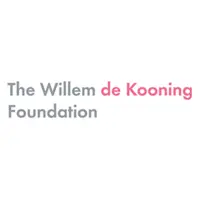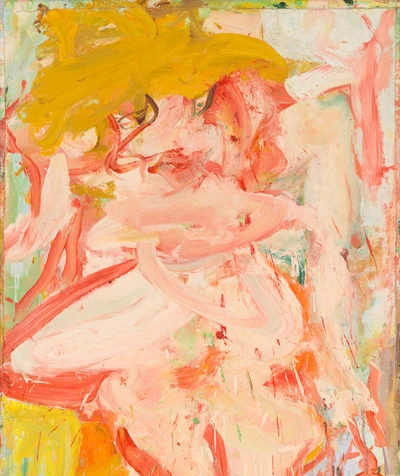Chaïm Soutine / Willem de Kooning, painting embodied

© © The Solomon R. Guggenheim Foundation / Art Resource, NY, Dist. RMN-Grand Palais / The Willem de Kooning Foundation, Adagp, Paris, 2021 / The Solomon R. Guggenheim Foundation / Art Resource, NY,
Indeed, Soutine was an influence on the post-war generation of painters through his paintings’ expressive force and his legend as a “cursed artist” with the vicissitudes and excesses of a Parisian bohemian. His work was especially promoted in the United States from the 1930s to the 1950s, a time when the figurative artist of the European tradition was being reinterpreted in the light of new artistic theories. The gestural painting and thick impasto of Soutine’s canvases led critics and exhibition curators to proclaim him as a “prophet,” the herald of American Abstract Expressionism.
It was precisely in the early 1950s that Willem de Kooning began his pictorial 'Woman', paintings in which he developed a unique form of expressionism between figurative art and abstraction. The development of this new language corresponded to the moment when de Kooning took on the artistic world of Chaïm Soutine and responded to it. De Kooning had discovered the paintings of his predecessor in the 1930s, and then at the retrospective devoted to the painter at the Museum of Modern Art in New York in 1950. Later, when he visited the Barnes Foundation Collections in Philadelphia in 1952 with his wife Elaine, Soutine’s works would make a lasting impression on him.
Better than any other artist of his generation, de Kooning saw in Soutine’s works a tension between two apparent opposites, a search for structure combined with a passionate relationship with the history of art, and a clearly informal tendency. Soutine’s oeuvre therefore became a permanent reference for the American artist. De Kooning, who sought a path out of the antagonism between figurative and abstract art by developing an original "third way", may have found in Soutine's work a kind of legitimation of his own style.
The exhibition will feature a dialogue between the distinctive worlds of these two artists through around fifty works based on major themes: tension between figures and shapelessness, fleshiness in painting, and the “gestural” painting style of both artists.
These thematic sections will be interspersed with key historical moments, including the MoMA’s 1950 Soutine retrospective and de Kooning’s visit to the Barnes Foundation in 1952.
This public display—the first on this subject—is part of the series of temporary exhibitions that the Musée de l’Orangerie has put forward based on its collection, especially that of Paul Guillaume, following Apollinaire. The Eyes of the Poet (2016), Dada Africa, Non-Western Sources and Influences (2017), and Giorgio de Chirico. Metaphysical Painting (2020), and it returns to the question of reception in the United States, after Water Lilies. American Abstraction and the Last Monet (2018).
The exhibition is organized jointly with the Barnes Foundation of Philadelphia, which holds a large number of Soutine’s works. They were collected by Barnes on the advice of Paul Guillaume, who was at the origin of the Musée de l’Orangerie collection.
It enjoys the support of the The Willem de Kooning Foundation, New York and Wilhelm & Associés.
Exhibition displayed at the Barnes Foundation of Philadelphia from 7 March to 8 August 2021.
The exhibition is now over.
See the whole program














